It started with a knock on the door in the middle of a Monday. The young man standing there was clean-shaven, square-jawed, a look-you-in-the-eye kind of guy. All-American, if there were such a thing. He was wearing a white shirt with a black embroidered logo, and he had something tucked under his arm that I assumed was a bible.
He wanted to know how I was doing, but before I answered he complimented my hanging basket, telling me how much he loved the flower color and asking what kind of plant it was.
Smooth, I thought. He’ll be selling waterfront property in Nebraska in no time.
“What, exactly, are you doing here?” I smiled, stepping from the threshold to the porch, and pulling the door partially closed behind me, to keep the air conditioning in.
“Backyard pest control,” he replied, appearing happy to not have to talk about plants any longer. “I’m doing work for a couple of your neighbors,” he said, naming them.
Pest control? He might’ve had better luck selling Jesus. That’s when I realized that the thing under his arm was a tablet.
I saw his eyebrows shoot up when I squashed all hope of a sale by explaining that I was a bug lover. I appreciated that he didn’t call out my hypocrisy when I swatted a mosquito trying to take advantage of my exposed arm. The kid wasn’t half bad.
I made him promise to wear protection when he sprayed. He said it was just a summer gig, and that he was in college in Colorado. He got on his Segway and moved on. I thought that would be the end of it.
Instead, I woke up in the middle of the night with 100% clarity: I needed to write about insects. I even started crafting mental sentences to explain a choice of topic that’s liable to make some folks itch just thinking about it.
Why insects? Two answers, one not especially short, one not especially sweet.
Answer one: I think I was an entomologist in a former life. It’s not exactly that I love bugs, like I told the Jehovah’s Eradicator, it’s more that I’m fascinated by them. The ones that bite or sting can be tricky. I’m not relishing being a week into a round of doxycycline on account of a temporary bullseye tattoo from a tick I never saw. I’m aware that malaria kills something in the realm of 2 million people every year, that Florida and Texas have reported recent cases, and that mosquitoes carrying West Nile virus were found in the capital city of my home state just last week. But, in the grand scheme of things, arthropods are hardly our worst enemies when it comes to diseases.
Meanwhile, they serve so many other critical functions:
They pollinate most of the plants that supply most of our food.
They’re food for multitudes of other species, including humans.
They aid in the design of technological advancements including pulp and paper in the 1700s, on up to more modern inventions like tiny drones, advanced reflective surfaces on solar panels, and never-flat tires.
Feel free to geek out further, like I did.
It would be easiest to align my insect interest with my farming years, when distinguishing friend from foe could make or break the fruits of my labors. But, it runs deeper than that.
As a child, I was totally attracted to ladybugs. I still am, and I’d bet you are, too. Who doesn’t take notice of a polka-dotted, fashion statement on six legs? Since we humans are not inclined to eat them, and most of us aren’t growing wine grapes, we don’t have to be too concerned about their inherent bad taste.
By the way, if you’re wondering how to spot the difference between ladybugs and ladybirds, I’ve got a tip for you: Don’t. They’re the same insect. They come in different color combinations, and there is a non-native type that’s worth getting to know, if you don’t already, but the two terms are used interchangeably to describe the same shiny beetle.
Righto. So, back to my knee-high to a grasshopper days, of course I have to mention the fascination with lightning bugs (fireflies, for you westerners) and the hours of entertainment derived from capturing them in jars, holes punched in the lids, just to watch their butts blink.
Creeping away from the more common choices, I also enjoyed collecting roly-polies, formally pill bugs, and thought praying mantises were just tiny humans in extraordinary costumes. I felt bad for skewering earthworms when we used them as fishing bait. Bagworms, on the other hand, made for intriguing, if morbid, dissection experiments. The rare sighting of a luna moth at Girl Scout Camp was an unforgettable experience.
Maybe all that was normal, suburban kid stuff. But, when I landed at the farm, with a lead role in my own version of Green Acres, it somehow felt like the enchantment had always been there, that it just grew up. I was smitten!
I learned about bugs that could trash an entire crop: striped and spotted cucumber beetles, flea beetles, Colorado potato beetles, thrips, squash bugs, stink bugs, harlequin bugs, lace bugs, vine borers, leaf miners, leaf hoppers, tomato hornworms, cabbage worms, cabbage loopers, aphids, white flies, onion root maggots, spider mites, wireworms, cutworms, and nematodes.
And, I learned about the more beneficial types like assassin bugs, damsel bugs, pirate bugs, wheel bugs, ground beetles, dung beetles, robber flies, soldier flies, hover flies, dragonflies, butterflies, wasps of every size, bees of every kind, and spiders.
The huge black and yellow garden spiders, orb weavers with zigzag patterns stitched into their webs, were impressive enough while hanging around in a holding pattern for their next meal. But, when someone helped them along by tossing a horse fly into their sticky digs, it was a real show stopper. And, I’ll always remember knowing I’d happened upon my first black widow, well before I flipped her over to marvel at her bright-red hourglass.
I don’t farm anymore. As a result, I don’t spend as many consecutive hours outside, something I regret, except on my annual visits to the dermatologist. And, I’m still into bugs. If I see one I haven’t met before, I’m driven to identify it.
I’d probably be wise to invest in a decent identification app, but all of the fun and most of the learning comes from cobbling together the right combination of descriptors, to bring up close approximations in online images, until I can finally home in on the arthropod of the hour.
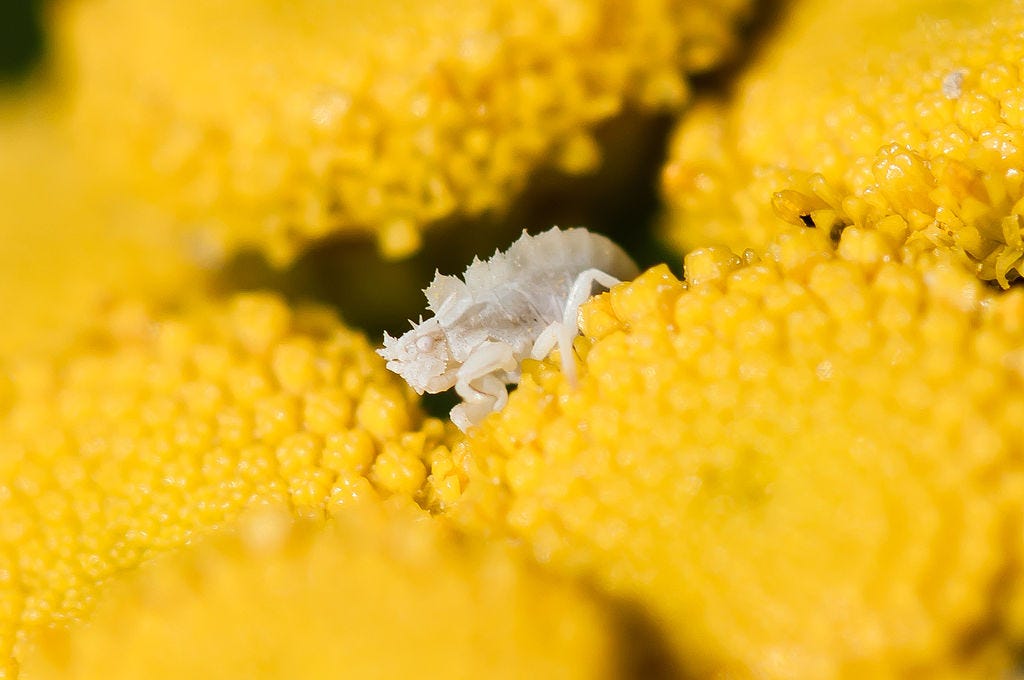
Up until now, I’ve been working through the not especially short answer to why I’m writing about bugs. Basically, I can’t help myself. I might owe my friend, Willoughby, an apology, for subjecting her to my recent story of the ambush bug nymph. I’ll spare you.
Now, at last, answer two: the one that’s not especially sweet, but I figure if you’ve stuck around this long, you can handle the weight of it.
The thing is, insects are in trouble. Despite the seeming everywhere-all-at-once abundance of them, they are in serious decline, both in total population and in numbers of species. To bring that news closer to home, our beloved lightning bugs are among those whose numbers are decreasing, with 1 in 3 species threatened by extinction in the near term.
In The Collapse of Insects, a December 2022 piece published in Reuters, which is made even more impactful by the use of motion graphics, the authors warn of an insect apocalypse, stating that “[t]he world has lost 5% to 10% of all insect species in the last 150 years — or between 250,000 and 500,000 species…”
By some estimates, bugs are declining at a rate of 1% to 2% percent annually, which further translates to the depletion of 1/3 of insect individuals and 1/3 of all species, in just 40 years. Habitat loss, industrial farming, climate change, light pollution, and the introduction of non-native plants are all taking a toll.
And, that’s just the bad news we know, about the insects we know. Because invertebrates have, historically, received less funding for research than other animals, scientists suggest that 99% of insects haven’t even been assessed.
It gets worse, like a perverse inverse of that cumulative song we learned in our youth, with the old lady who swallows a fly, then proceeds to ingest all manner of other, increasingly large, creatures in successive attempts to catch the one she ate before. She downs a spider to catch the fly, a bird to catch the spider, a cat to catch the bird, a dog to catch the cat, and so on, until she finally dies after eating a horse.
Insects are the foundation of our food chains. Without them, other species, plant and animal alike, also disappear. It’s not a big leap to figure out where that lands us, eventually.
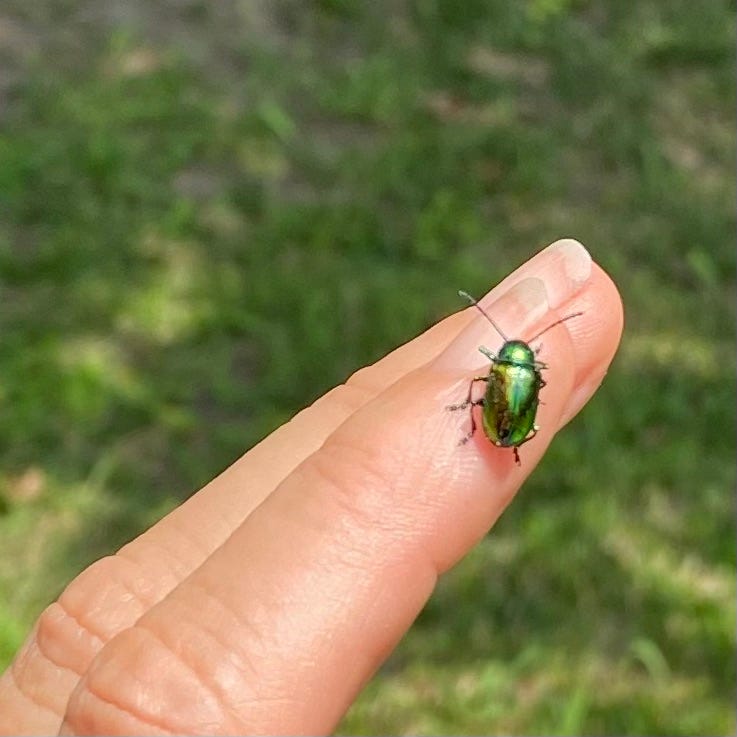
As you might have guessed already, particularly if you’ve been buzzing around these parts for any length of time, I assure you that there are ways we can help. Consider any of the eight ideas presented below (and here in more detail). Nothing on the list is difficult. Stupid-easy, I would call them. Implementing just one could have a positive impact. Imagine what would happen if we all committed to achieving at least half of this list.
Nobody likes to be told what to do, so I want to give you every opportunity to choose what works best for you. Don’t mind me while I strongly recommend the first two and leave you to select two more at will. Or six more, if you’re game!
Let 10% of your lawn go wild.
Ditch the pesticides, from door-to-door proselytizers and otherwise.
Limit outdoor lighting.
Wash your ride with biodegradable soap, and be careful about what you use on your driveway.
Stop thinking of insects as pests.
Become a bug ambassador. Tell your friends.
Pay attention to town, state, and national policies that impact insects (stink-eyes on contrary homeowners’ associations).
Here, again, is the more detailed article where I found the list, in case you accidentally skipped over it up above.
In March of this year, a very special insect was identified, one that had been “in captivity” since 2012. That’s when an entomologist named Michael Skvaria stopped by a Walmart in Fayetteville, Arkansas, to pick up some milk. He saw an unusual bug on the side of the building, so he caught it, walked around with it in his hand while he was shopping, took it home, and, thinking it was an antlion, added it to his mounted specimen collection.
Then, he forgot about it for almost a decade, but during a 2020 class presentation he discovered that he’d actually captured a giant lacewing, an insect that predates the dinosaurs. None had been seen in the eastern U.S. since the 1950s, possibly due to efforts to suppress forest fires in the region, and it had been hundreds of years since they’d been spotted in this urban location. The discovery made a splash, prompting bug collectors everywhere to check their collections and keep their eyes peeled in places they might not have thought to look before.

It was a big deal, with important implications for bugs the world over. But, all I could think about was how this scientist trapped, and killed, an insect that had defied all the odds to be exactly where it was.
We can do better. I’m sure of it.
~Elizabeth

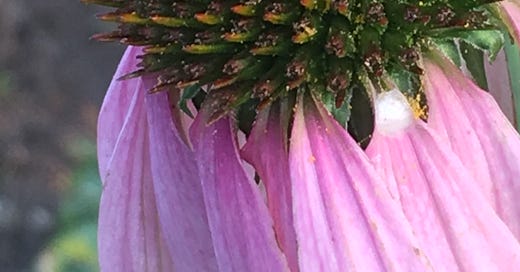


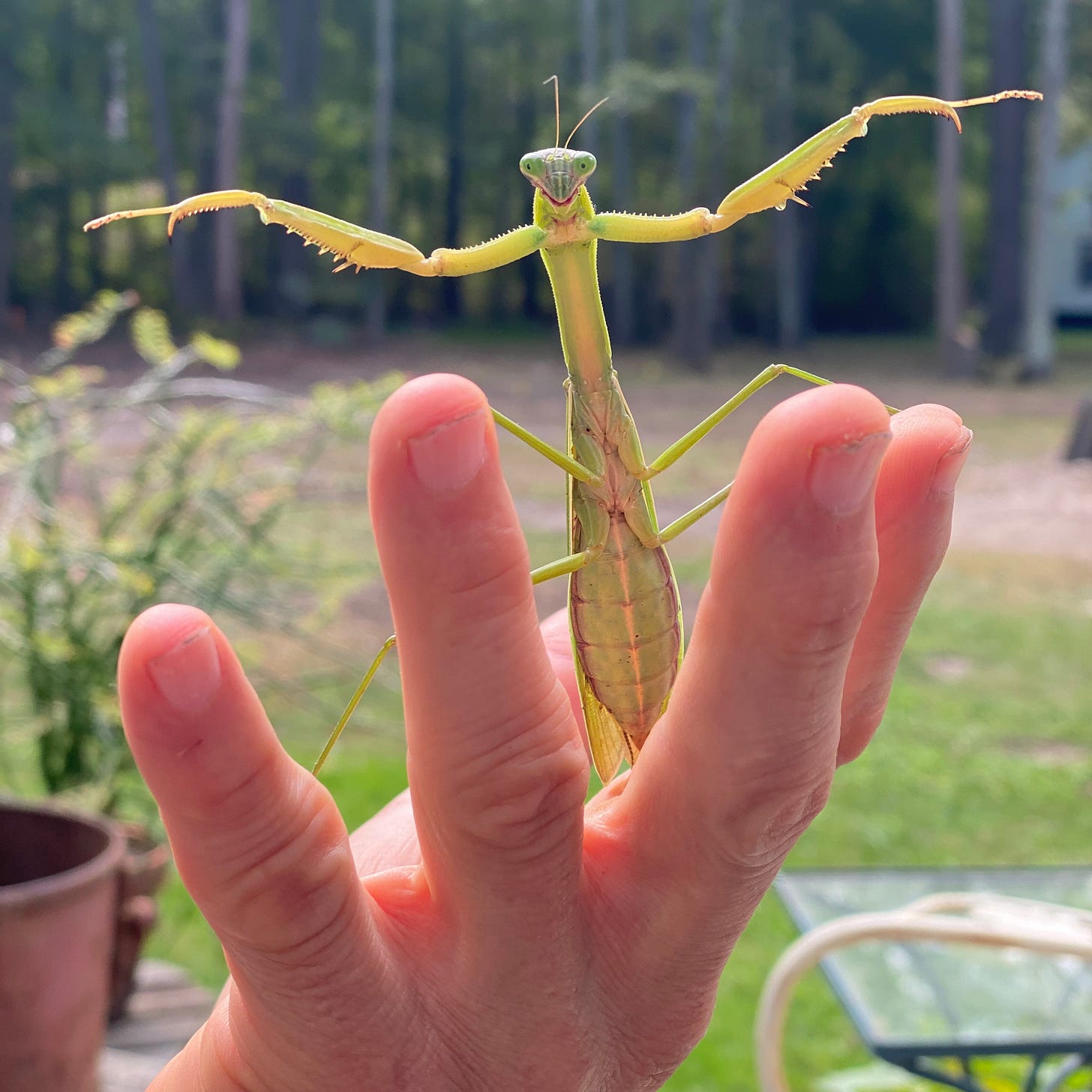
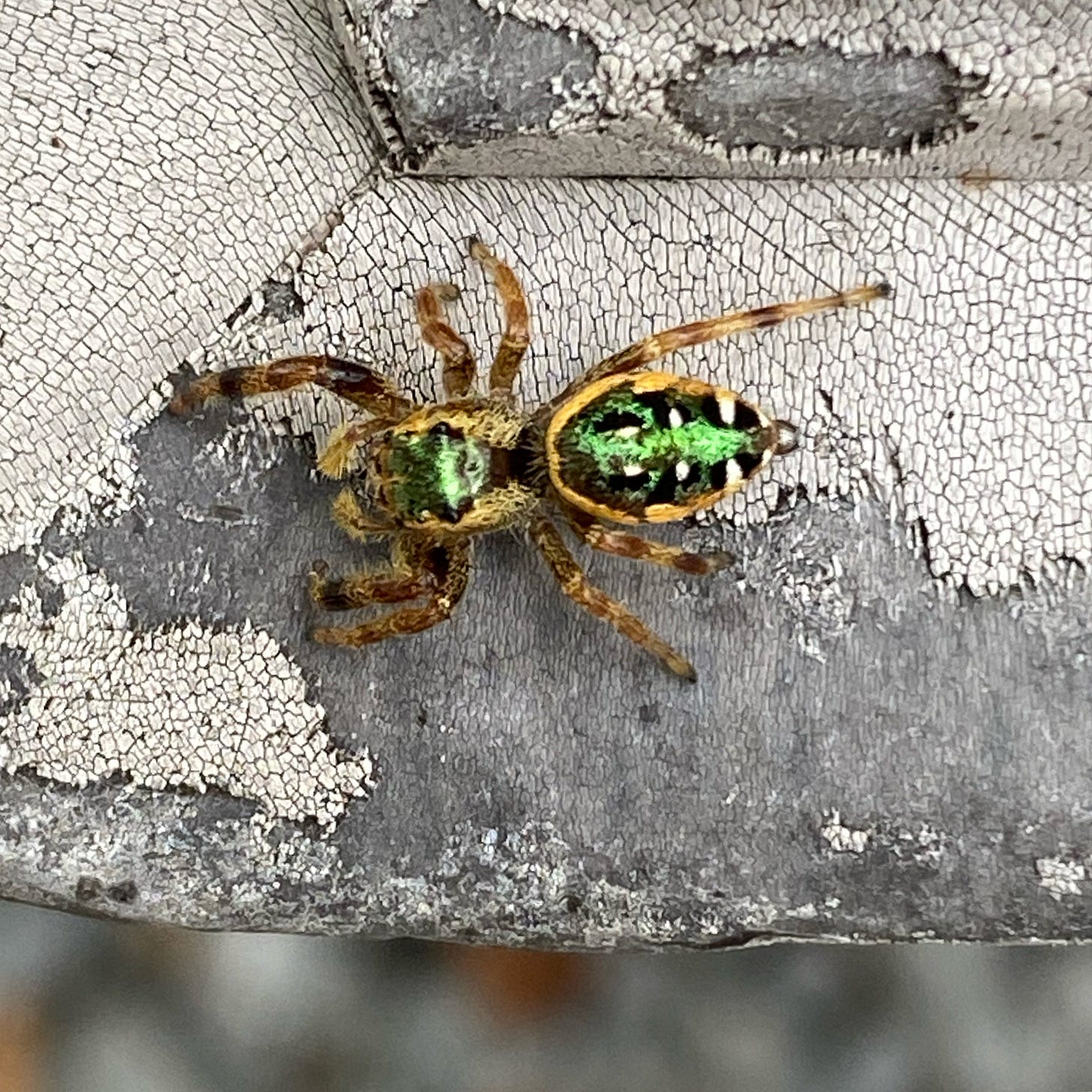
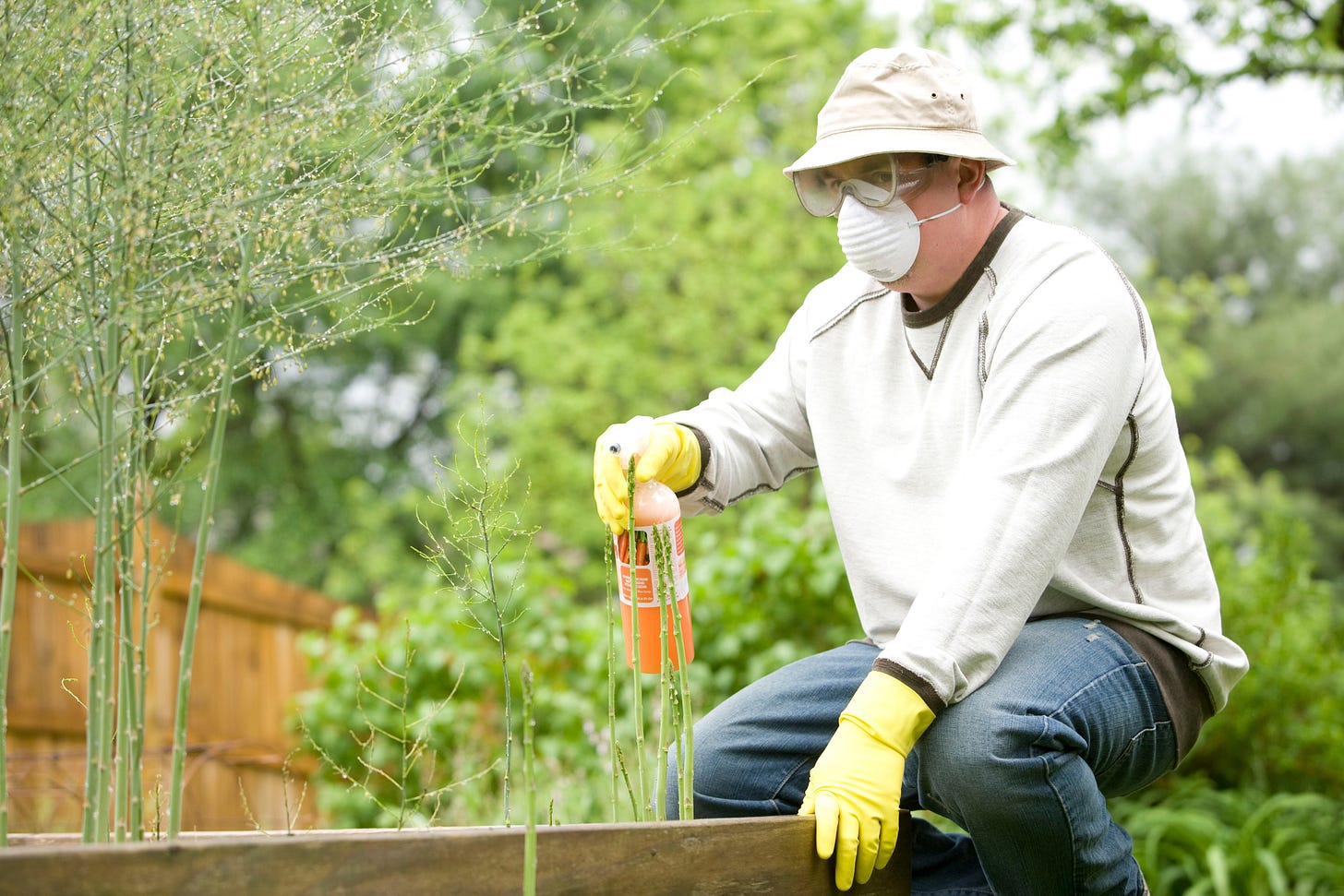

❤️ your writing as usual. BTW I told the Segway door knocker that we had a sustainable garden & loved insects too!
Thanks for this. I've been proselytising for bugs for a while here in the UK, but it's a hard sell sometimes.